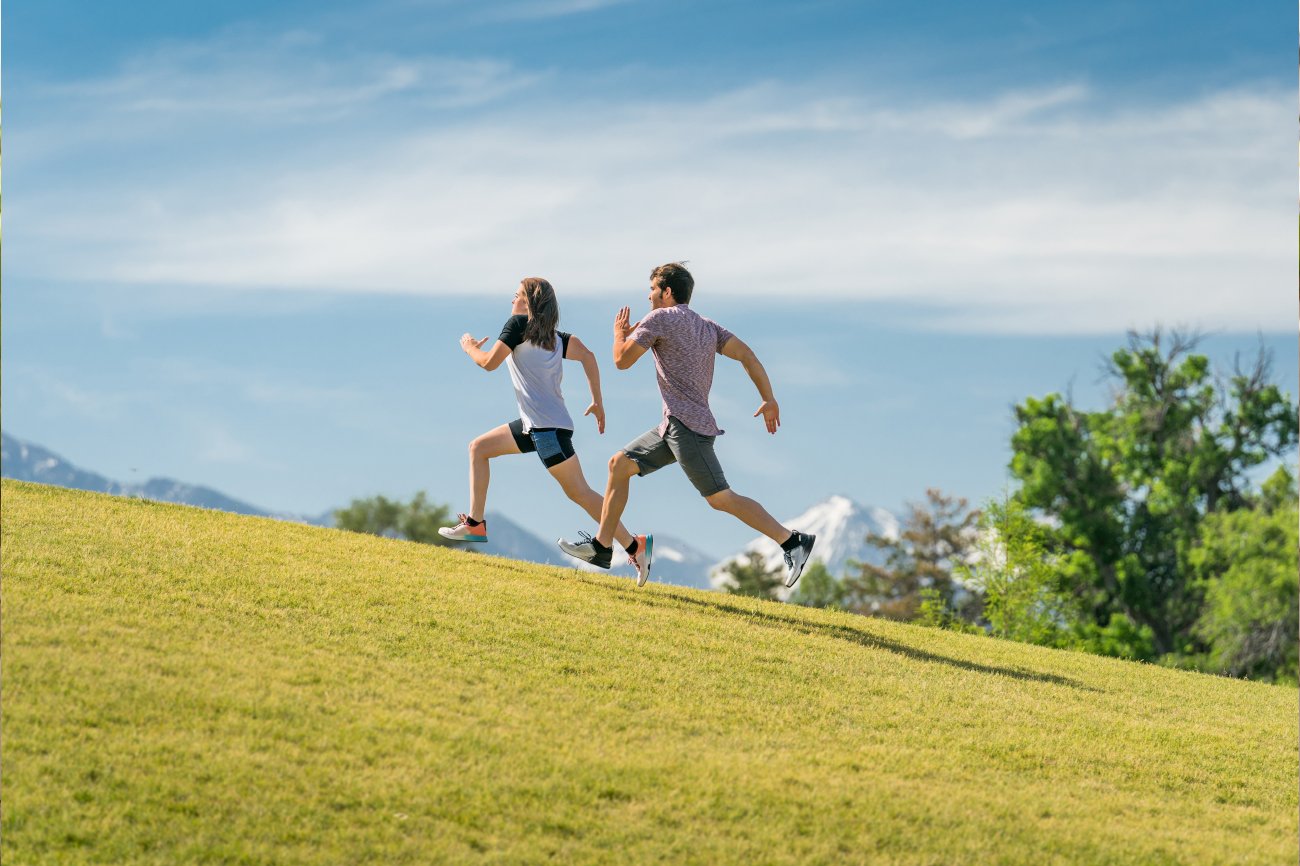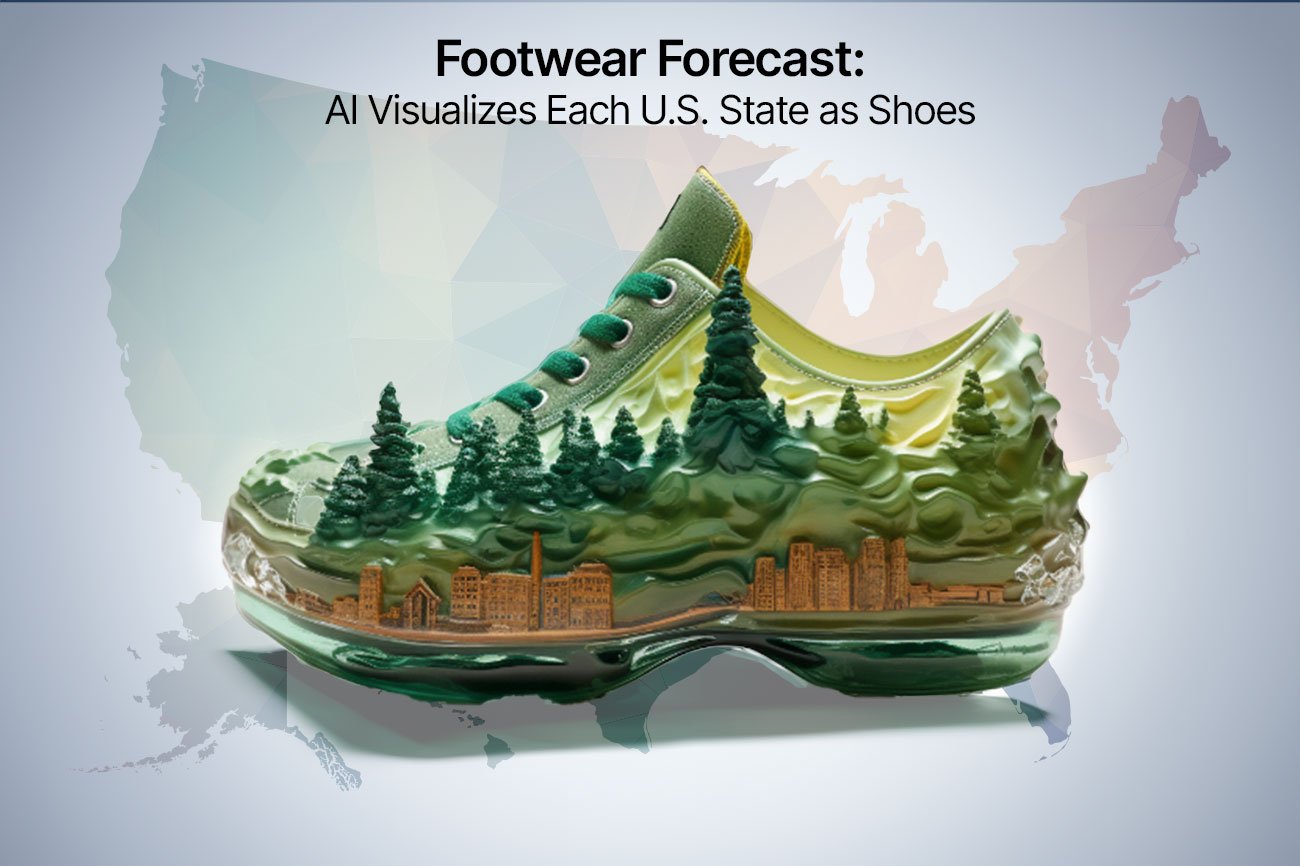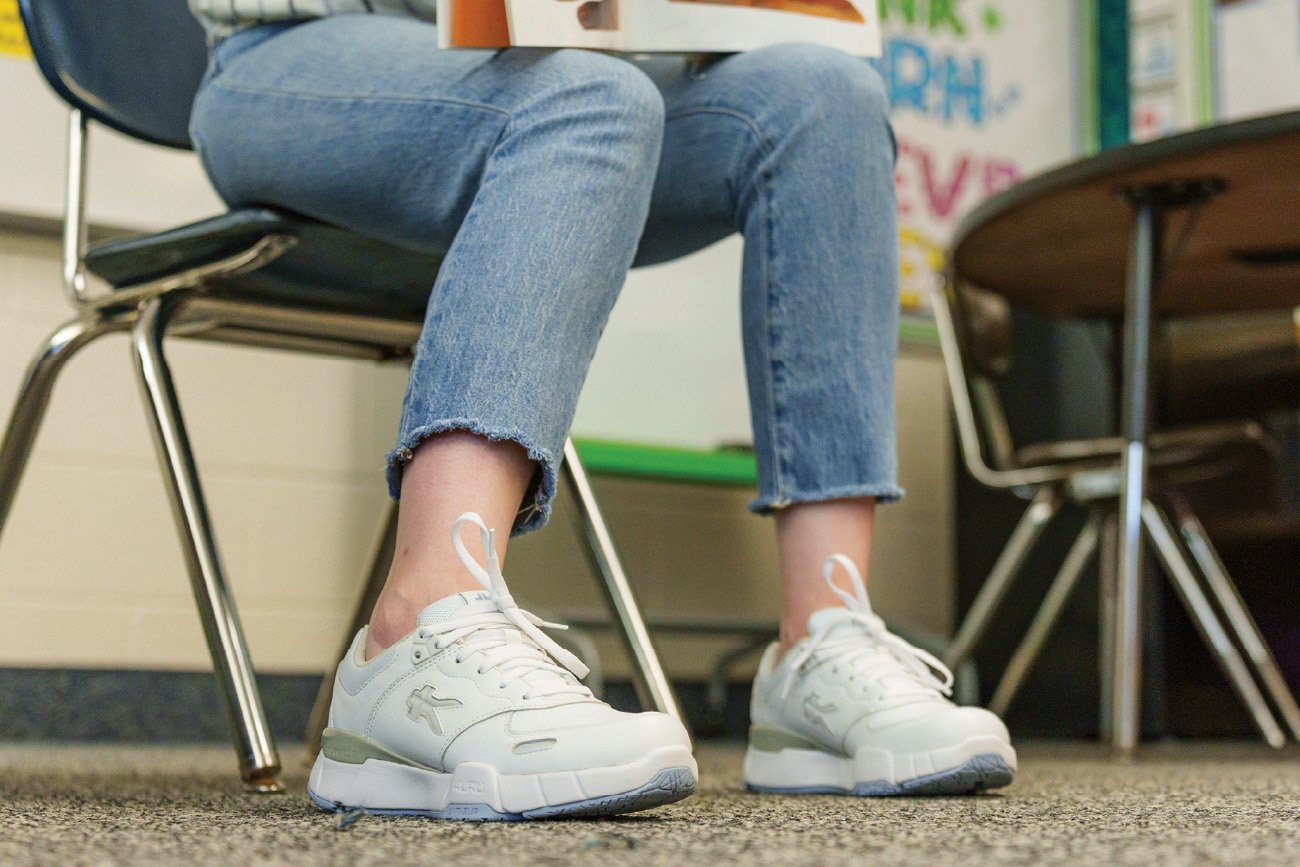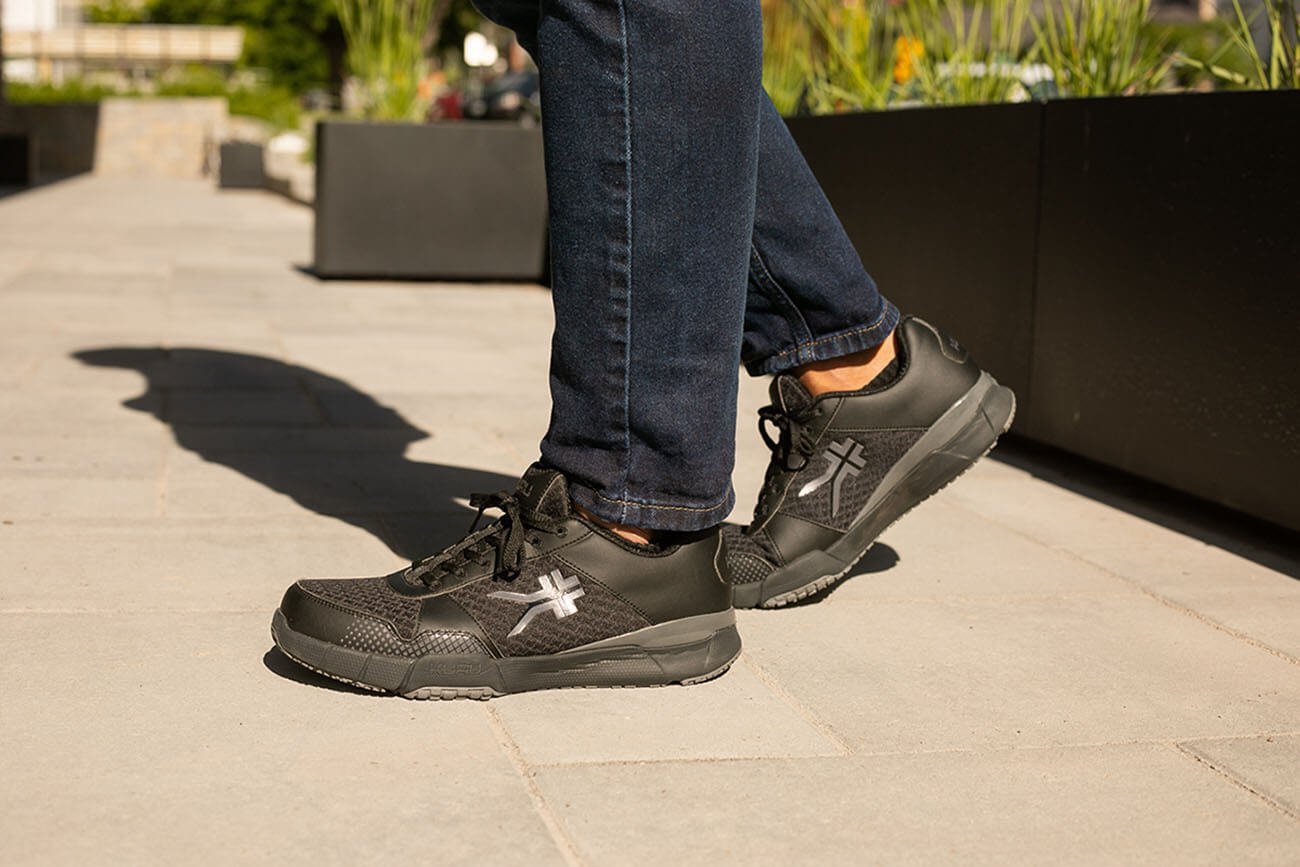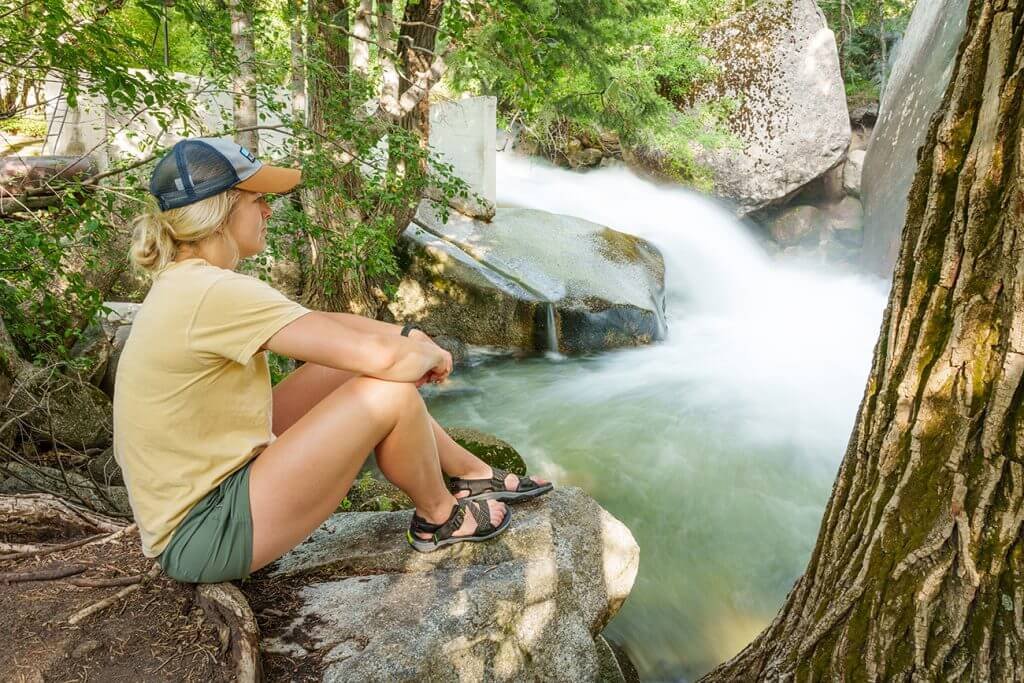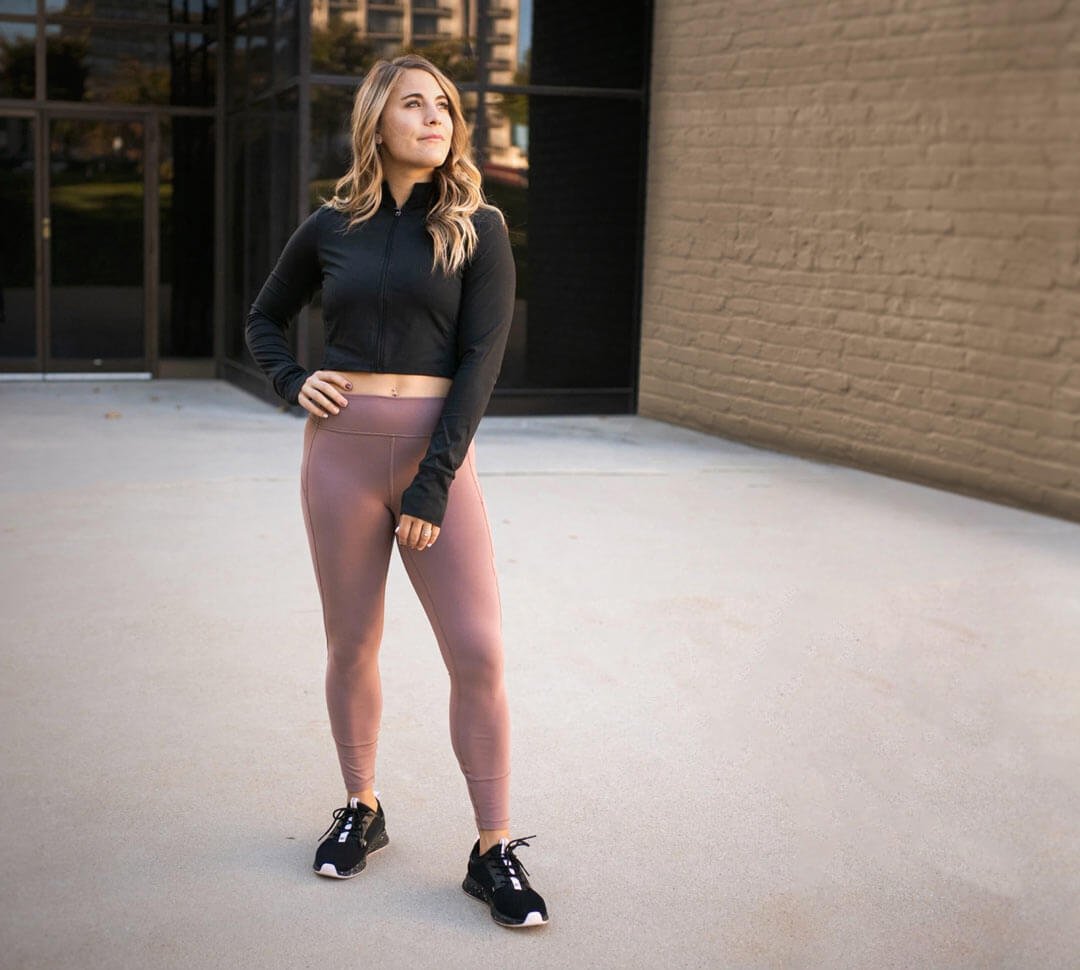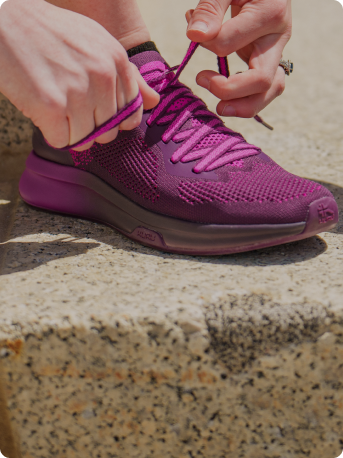Best Warehouse Shoes
If you work in a warehouse, it’s important to get the best warehouse shoes available on the market. When you walk on concrete floors all day, the lack of cushion for your feet can begin to take its toll. However, you can offset it by wearing good, supportive shoes. Having the right pair of warehouse work shoes can make all the difference in your daily activities.
Making the right shoe choice can help you minimize your risk of getting injured while providing you comfort in every step. Even with consistent walking, rapid movements, lifting heavy loads, and repetitive motions, you can work in comfort if you’re wearing the right shoes. This is where KURU Footwear comes in—with our wide range of work shoes, you’ll be able to do your job with reduced risk of injuries and lower body pain.
There are a few crucial things you’ll need to know before purchasing your first pair to ensure that you get the best shoes for warehouse work.
- Construction and design: The best shoes for warehouse workers will have a durable construction that can withstand extreme weather conditions as well as prolonged pressure. These will have a design that will look attractive while providing complete functionality and optimum performance. Be sure to carefully consider the shoe’s materials and whether they will be able to meet your workplace standards.
- Essential features: The best warehouse shoes will have plenty of features that make them stand out from the rest of the competition. Look for shoes with a closed safety toe, high durability, slip resistance, comfort, and good fit. A closed safety toe will give your feet better protection from falling objects and can be made from steel, carbon fiber, alloy, or strong plastics.
- Good price and high quality: If you want to get your hands on the best work shoes for warehouse work, be sure to look for high-quality construction. Remember that not all expensive warehouse shoes will guarantee better quality, so don’t be swayed by high price tags. Superior shoes can often be identified by the materials used to make them, where you’ll find better performance with those made from quality materials.
- Durability and longevity: The best shoes for warehouse pickers will be ones that are both practical and durable. Before making a decision, be sure to do your research since both branded shoes and cheaper alternatives may look the part but disappoint you after just a few short months. Cheap materials usually only result in a cheap shoe, so don’t waste your money. It is worth it to invest in heavy-duty materials that can withstand harsh conditions.
- Comfort over style: You don’t need to have the best-looking shoes at the warehouse, so always choose your comfort over the style of the shoe. You may even save some money by choosing plainer shoes over more gaudy styles. Doing this will ensure that you don’t suffer from blisters or sore feet even if you stay standing all day. Look for foam compound materials that provide cushioning for your feet — they can also make your steps lighter, resulting in less impact for your feet and joints.
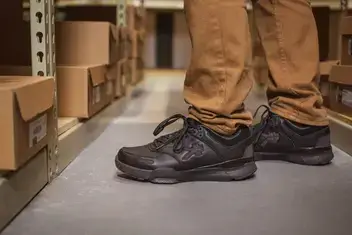
Workplace Foot Injuries
Find out what types of safety or ergonomic hazards warehouse workers face that can lead to foot injuries.
There are many different kinds of injuries that warehouse workers can face in their workplaces. Often, their working environments will present various kinds of danger, where some are more obvious than others. Unfortunately, the lack of attention to foot safety can play a huge role in the occurrence of workplace accidents, such as:
– Broken or crushed feet and the amputation of feet or toes caused by moving vehicles, falling objects, and having feet trapped between cracks, objects, or belts.
– Cuts and severed toes or feet from rotary mowers, chain saws, and unguarded machinery.
– Punctures to feet by sharp glass, metal objects, or loose nails.
– Electric shocks from contact with static electricity or other sources of electricity.
– Burns from contact with chemical splashes, molten metal, fire, or explosives.
– Twisted or sprained ankles and broken or fractured bones as a result of trips, falls, and slips. These may occur due to poor lighting, incorrect footwear, slippery floors, or littered walkways.
Logistics Management Industry Facts and Stats
We take a look at some facts and stats you might not have known about footwear worn by warehouse workers.
According to a study in Maryland, there are cases in workers’ compensation that found the following to be the most common foot injuries:
- Broken toes
- Broken feet
- Stress fractures
- Severe heel injuries
In 700 of these cases, the average cost of a foot injury was almost $11,000, while the average partial disability award can reach as much as $8,500. On average, the full and final settlement for foot injuries is $17,435, which can increase by over $6,000 if ankle injuries were included. However, it’s important to keep in mind that every cost will vary on a case-to-case basis.
Foot Injury Prevention
Learn how to best protect your feet in the logistics management industry.
There are a lot of potential issues in the workplace that you can take steps to avoid. Wearing good footwear will prevent some hazards and help you avoid injuries. Implementing proper foot and leg protection around your workplace can include the following:
– Thick leggings that can help to protect the feet and lower legs from heat hazards such as welding sparks, sharp objects, or molten metal.
– Having metal instep guards can protect your arches from both compression and impact. These guards can be made of steel, aluminum, plastic, or fiber and can be strapped outside of the shoes.
– Toe guards can fit over the shoes to keep toes away from compression and impact hazards.
– A combination shin and foot guard can protect the lower legs and feet and can be used along with toe guards to provide full protection.
– Safety shoes can come with heat-resistant soles and impact-resistant toes to protect your feet against hot work surfaces.
-
What are the best shoes for warehouse work?
As mentioned above, the best shoes to work in a warehouse should be safe and comfortable. Because your work will require you to stand and move for long periods of time, your shoes must be sturdy to help protect your feet from the ground to reduce pain. For example, the best shoes for warehouse workers will be those that offer safety, since objects can fall on your feet. The best shoes for concrete warehouses should be durable and will need to have the proper cushioning while providing you with plenty of safety features.
-
Are safety shoes required in the warehouse?
This will depend on the requirements of the warehouse where you work. However, it is recommended that you wear safety shoes while inside warehouses, even if they’re not required. There’s every chance that an object may fall on your feet and cause damage. Wearing safety shoes can help prevent such injuries.
-
How do I know which shoe to buy? Which is best for me?
The best shoe for you will depend on your unique foot type and the style you’re looking for.
The best shoes for men and women alike offer adequate arch support and cushion. Whether you’re looking for bright blue shoes, dark blue shoes, or white shoes with blue accents, KURUs line of pain-relieving footwear help alleviate foot pain symptoms for all-day comfort.
-
How is the arch support of KURU shoes?
KURU shoes deliver excellent arch support without the need for thick inserts or expensive, custom orthotics.
Superior arch support starts with our patented KURUSOLE technology, which delivers natural cushioning and dynamically hugs your heel with every step. Every foot is unique, and our ULTIMATE INSOLES adapt to fit your needs by using your own body heat to custom-mold to the shape of your feet over time.
The corrective nature of our superior arch support is designed to neutralize your weight distribution and place your foot in the best anatomical position. This support can take some getting used to. We suggest slowly breaking in your new shoes over the course of 2–3 weeks.
-
Are your shoes considered orthopedic shoes?
While our shoes are not currently considered orthopedic by a medical standard, we have received thousands of positive reviews from customers who say their KURU shoes with good arch support helped reduce or eliminate their pain—from plantar fasciitis to bunions.
Each of our shoes feature a wide toe box, superior arch support, shock absorption and patented heel technology, engineered for pain relief.
At KURU, we pride ourselves on our unique approach to shoe design. We believe that shoes should be shaped to fit the natural contours of your feet, which is why we create every pair in three distinct support layers, not just an insole.
Our revolutionary ergonomic design starts with a curved footbed and adds unparalleled triple-layer support that includes shock-absorbing KURUCLOUD, heel-cupping KURUSOLE, and arch-supporting ULTIMATE INSOLES. The result? Shoes that are so comfortable you’ll stop thinking about your feet.
KURUSOLE
Our patented KURUSOLE plate is designed to help reduce foot pain, redirect stress, and encourage a healthy gait. It also features a …Show More
Our patented KURUSOLE plate is designed to help reduce foot pain, redirect stress, and encourage a healthy gait. It also features a unique design that cups the heel and allows for dynamic flexion with each step, where it provides superior support that helps protect and preserve the heel’s fat pad. As a result, it guides your body to a more natural alignment for protection and comfort like nothing else.
…Show lessKURUCLOUD
With our KURUCLOUD foundation, you can enjoy a smooth and comfortable stride. Forming the base layer of our three-part technology, …Show More
With our KURUCLOUD foundation, you can enjoy a smooth and comfortable stride. Forming the base layer of our three-part technology, KURUCLOUD uses an advanced blend of lightweight and high-grade EVA foams to provide support in every step. This shock-absorbing technology helps to alleviate pressure while offering a soft cushion for comfort that feels like walking on clouds.
…Show lessULTIMATE INSOLE
Our three-part technology is made complete with our ULTIMATE INSOLE, which provides support similar to orthotics without any additional purchases. Made …Show More
Our three-part technology is made complete with our ULTIMATE INSOLE, which provides support similar to orthotics without any additional purchases. Made from dual-density polyurethane foam, the ULTIMATE INSOLE offers superior cushion and arch support. This technology also forms to your foot over time for personalized support.
…Show less
KURUSOLE
Our patented KURUSOLE plate is designed to help reduce foot pain, redirect stress, and encourage a healthy gait. It also features a unique design that cups the heel and allows for dynamic flexion with each step, where it provides superior support that helps protect and preserve the heel’s fat pad. As a result, it guides your body to a more natural alignment for protection and comfort like nothing else.
Fine, We’ll Tell You Our Secret
What makes KURU different? Every KURU shoe comes with built-in patented KURUSOLE tech—a foot health game changer.
While other shoes are flat on the inside, KURUSOLE is shaped like your foot to hug and prevent fatigue and pain.

